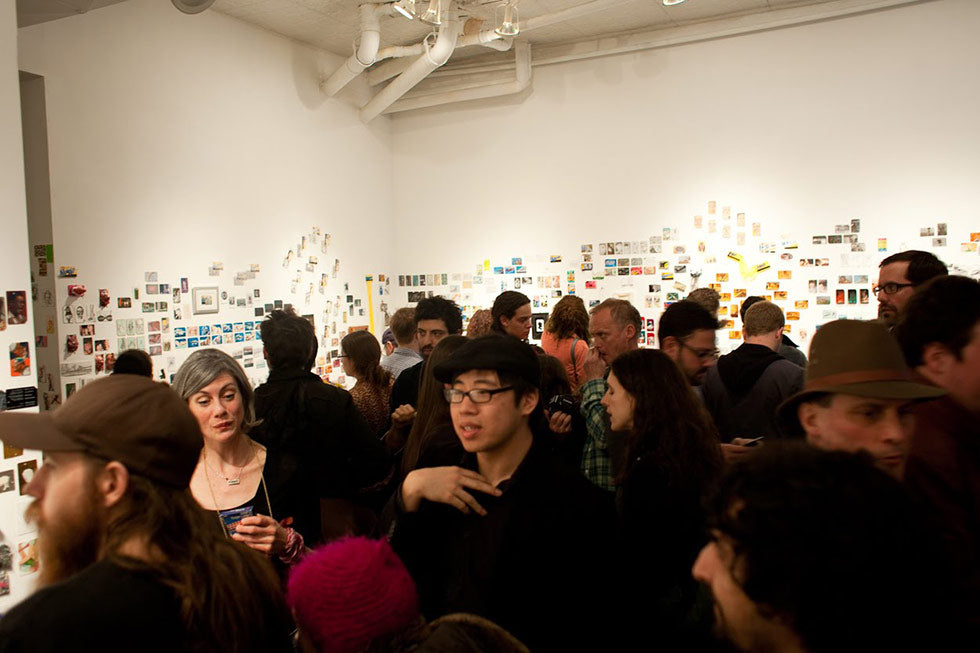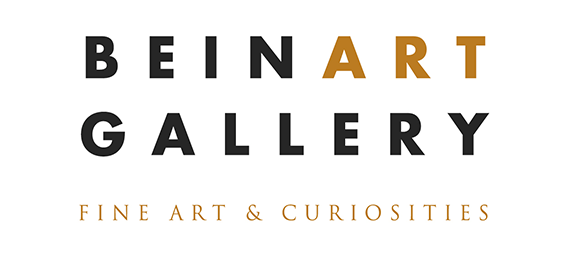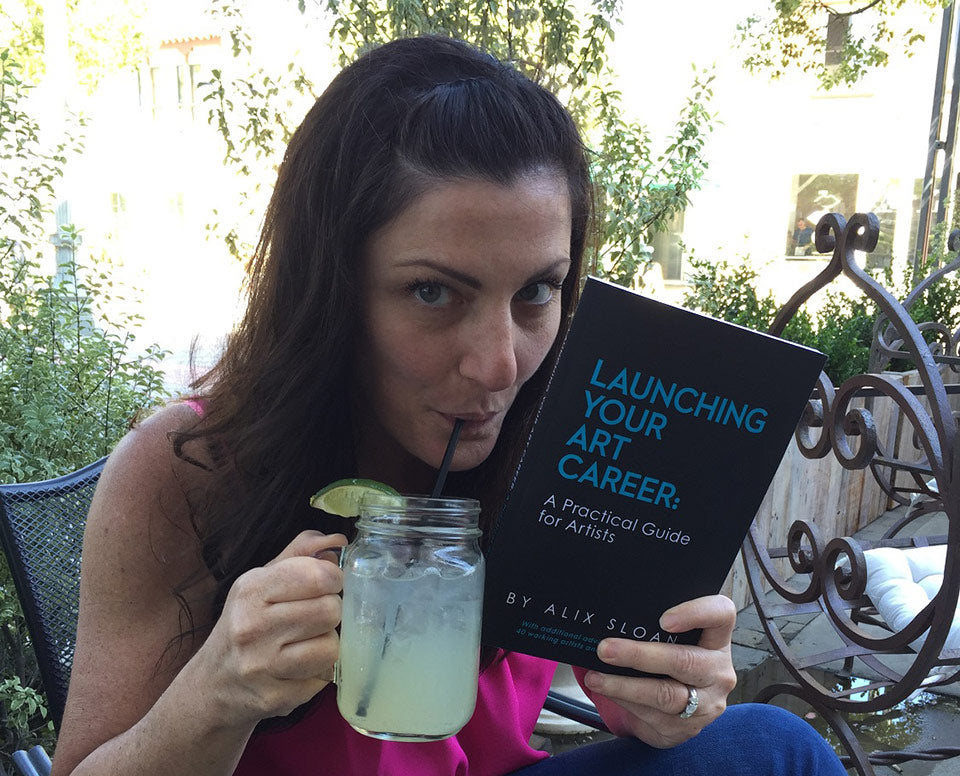
Single Fare 2: Please Swipe Again opening at Sloan Fine Art in 2011.
Making terrific work is one thing. Getting it out into the world where people can see, enjoy and possibly buy it is quite another. Regardless of personality or confidence level, many artists find this particular aspect of building a fine art career daunting, frustrating and downright mystifying.
After over 25 years in the arts, as a gallerist, consultant, author and educator, I can tell you sincerely and with confidence, my number one piece of advice is to KEEP AT IT! Make great work, make better work, make time to not just create your work but also work on your career. If you’re committed and proactive and keep on knocking, opportunity will eventually answer its door! It may not look exactly like what you expected. But I believe you will find your audience and your way. And while you’re keeping at it, I can offer you some tips that will hopefully help you navigate, and streamline, the process.
This article was written by Alix Sloan from Sloan Fine Art.

Sloan Fine Art at Art Palm Springs 2018. Featuring John Abrams, Eric Finzi, Michael Malizia, Aaron Smith and Brad Woodfin.
The Submission Itself
The first step is putting yourself and your work out there. Thoughtful, personal, professional submissions are more likely to be successful.
- Submit selectively: Don’t submit to any and every gallery. Do your research and be realistic. Ask yourself: Would my work fit in well with what they are showing? (This can easily be determined by looking through their website.) Do they show artists at my level? (If you’re not sure, check out the resumes of the artists they show to get an idea of where they’re at in their careers.) Prepare a list of appropriate galleries. Then ask: Are they taking submissions? Never, ever, ever submit to a gallery that clearly states it isn’t taking submissions. It’s disrespectful and wastes everyone’s time.
- Personalize your communication: Don’t send the same, impersonal, email to everyone. Any time there’s an opportunity to send an email or submit a note, set yourself apart. Tell the gallery what you like about what they are doing, why you think your work is appropriate, anything to show you’ve put thought into your submission. And if you’re sending specific works, rather than just sending a link to your website, put some thought into what you send. Which works fit best with their aesthetic?
- Follow instructions precisely: This is your first interaction with the gallery. Do you want to show them you’re too distracted, or arrogant, to follow instructions? Or do you want to show them you’ll be easy to work with? Even if the instructions seem insane, follow them to the letter. I promise it makes a difference! And keep in mind your submission is a business communication. Take an extra minute to spell check, proofread and while you’re at it, double check those instructions.

Another photo from Single Fare 2: Please Swipe Again at Sloan Fine Art in 2011.
Navigating No
I hope your very first submission is met with an invitation to exhibit. But what if you don’t hear back, or worse yet, your dream gallery says no?
- Don’t take it personally: Some galleries will take the time to reply when they aren’t interested. Others are simply too busy. Do not send an email asking if they received your submission. Just assume they did, and either weren’t interested, or haven’t gotten to it yet, and move on. And don’t take a rejection personally. There are about a zillion possible reasons a gallery may not be interested, many of which have nothing to do with you or your work. They may love your work but already have an artist whose work is too similar. They may feel they just don’t have clients for the work. They may not agree that your work is a good fit, or feel it needs more development. They may have plans to take the gallery program in a different direction. Or they may just not like your work. But even then, that’s just their opinion. If they give you good feedback, terrific. If not, oh well. Regardless, don’t dwell on a no. Focus on finding a yes.
- Follow up if invited to: If somebody says no for whatever reason, but also asks you to keep them posted, please do!!! Sure, it may be a brush off. But it might not. They may genuinely like your work and want to be kept informed for, again, any one of a zillion reasons. So down the line, once you have some additional shows under your belt or a new body of work to share, follow up. Just remind them that they invited you to keep in touch and that’s what you’re doing.
- Keep good records: This is so important! Keep track of where you submitted, when, what the response was and who the contact was. Did anyone who wasn’t taking submissions change their policy? Does that gallery you love that rejected you have a new director who hasn’t seen your work? Do you have enough new work to resubmit to a gallery? Add new galleries. Delete those that close or no longer interest you. Keep your list up to date and use it as a resource over time.

Inside Sloan Fine Art during the opening of Single Fare 2: Please Swipe Again in 2011.
What else can you do?
Submitting your work to galleries is one way you can proactively pursue opportunity. But it isn’t the only way.
- Get out and show up: There’s more than one way to make connections. If you like a local gallery that doesn’t take submissions, show up in person whenever possible to openings and artist talks. Become a familiar face. It could lead to a conversation that could lead to an invitation. Don’t ever put anyone on the spot in person by trying to show them your work on your phone or asking them to pull up your website. But if they ask, by all means, share. And show up at your friends’ exhibitions if you can. You never know who you’ll meet or what you’ll learn. Besides, if you show up for them, they’ll show up for you when the time comes.
- Build relationships: Most opportunities come through referrals and connections, not cold submissions. The more robust your community, the more opportunities you’ll hear about and the more people you’ll meet, which will then lead to more opportunities. And with social media, you can build community, no matter where you live. Be supportive and helpful whenever possible. If you loved someone’s show, say so. If you hear of an opportunity a friend would be perfect for, share it with them or recommend them. Become a positive, valuable member of your community. And don’t forget to pay it forward once you’re a big success!
- Don’t limit yourself: It’s a mistake to only apply to galleries locally or in a few select cities. Cast your net wide. Then don’t just sit around and hope to hear back. Look through sites like artdeadlines.com for open calls. Screen them carefully as most have a submission fee. But if a show is at a legitimate venue with a respected juror and your work fits the guidelines, submit. Look for appropriate grant and residency opportunities that could expose more people to your work. And brainstorm creative ways to get your work seen, like hanging a piece at a friend or relative’s place of business, throwing a studio party or mounting a show with friends.
I hope you found these tips helpful. Now get to work making that list!
Alix Sloan celebrating the release of her book, Launching Your Art Career: A Practical Guide for Artists.
Alix Sloan was the director of the La Luz de Jesus Gallery in Los Angeles and an independent curator, before opening her own gallery, Sloan Fine Art in New York in 2008. In 2012, she transitioned Sloan Fine Art to a nomadic gallery format and has been putting on shows and participating in art fairs all over the US ever since. She also teaches Business of Art classes online and in person and manages a website called “Practical Advice for Artists” which includes a blog, online courses and links to additional resources. Her book, Launching Your Art Career: A Practical Guide for Artists, is available from Amazon.




 Cart
Cart




